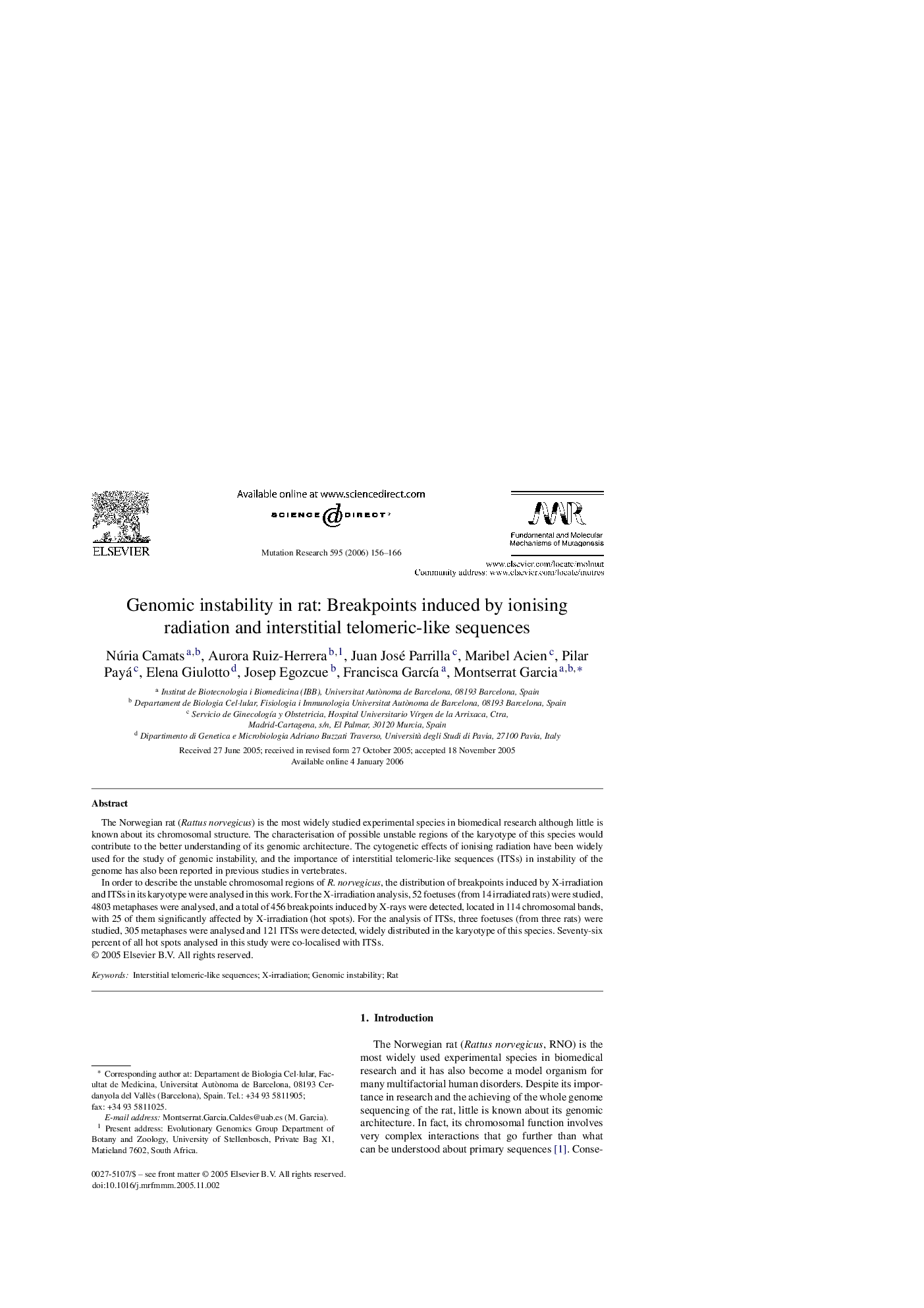| Article ID | Journal | Published Year | Pages | File Type |
|---|---|---|---|---|
| 2147669 | Mutation Research/Fundamental and Molecular Mechanisms of Mutagenesis | 2006 | 11 Pages |
The Norwegian rat (Rattus norvegicus) is the most widely studied experimental species in biomedical research although little is known about its chromosomal structure. The characterisation of possible unstable regions of the karyotype of this species would contribute to the better understanding of its genomic architecture. The cytogenetic effects of ionising radiation have been widely used for the study of genomic instability, and the importance of interstitial telomeric-like sequences (ITSs) in instability of the genome has also been reported in previous studies in vertebrates.In order to describe the unstable chromosomal regions of R. norvegicus, the distribution of breakpoints induced by X-irradiation and ITSs in its karyotype were analysed in this work. For the X-irradiation analysis, 52 foetuses (from 14 irradiated rats) were studied, 4803 metaphases were analysed, and a total of 456 breakpoints induced by X-rays were detected, located in 114 chromosomal bands, with 25 of them significantly affected by X-irradiation (hot spots). For the analysis of ITSs, three foetuses (from three rats) were studied, 305 metaphases were analysed and 121 ITSs were detected, widely distributed in the karyotype of this species. Seventy-six percent of all hot spots analysed in this study were co-localised with ITSs.
